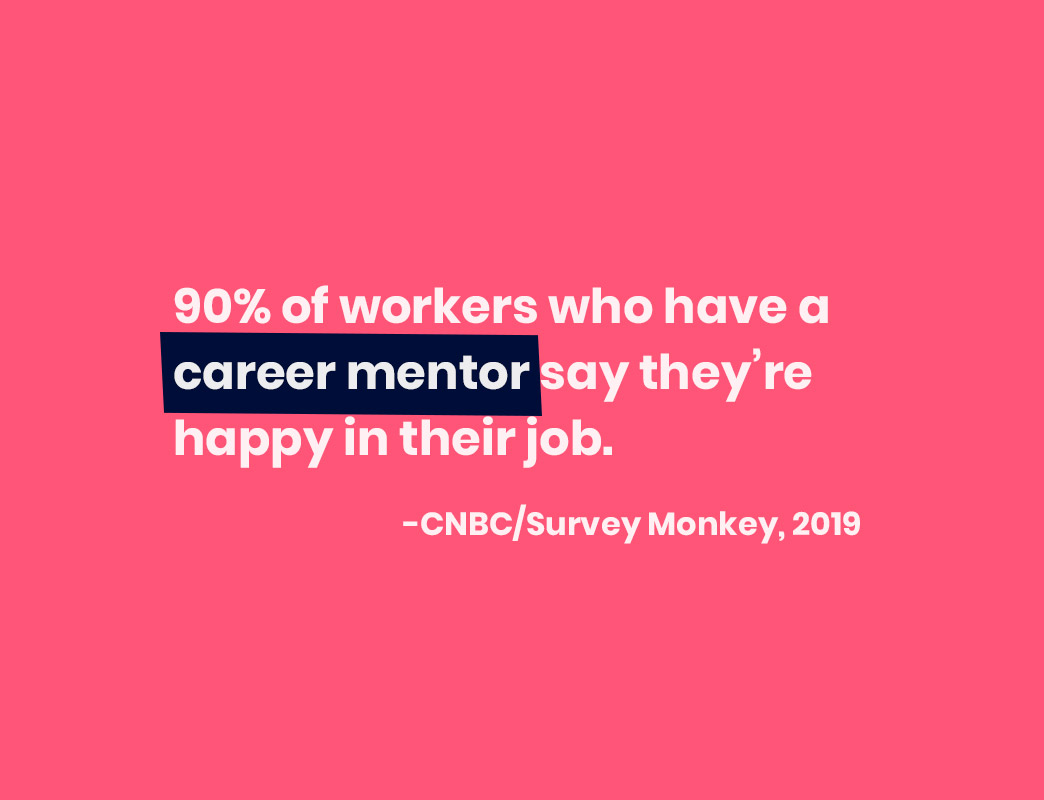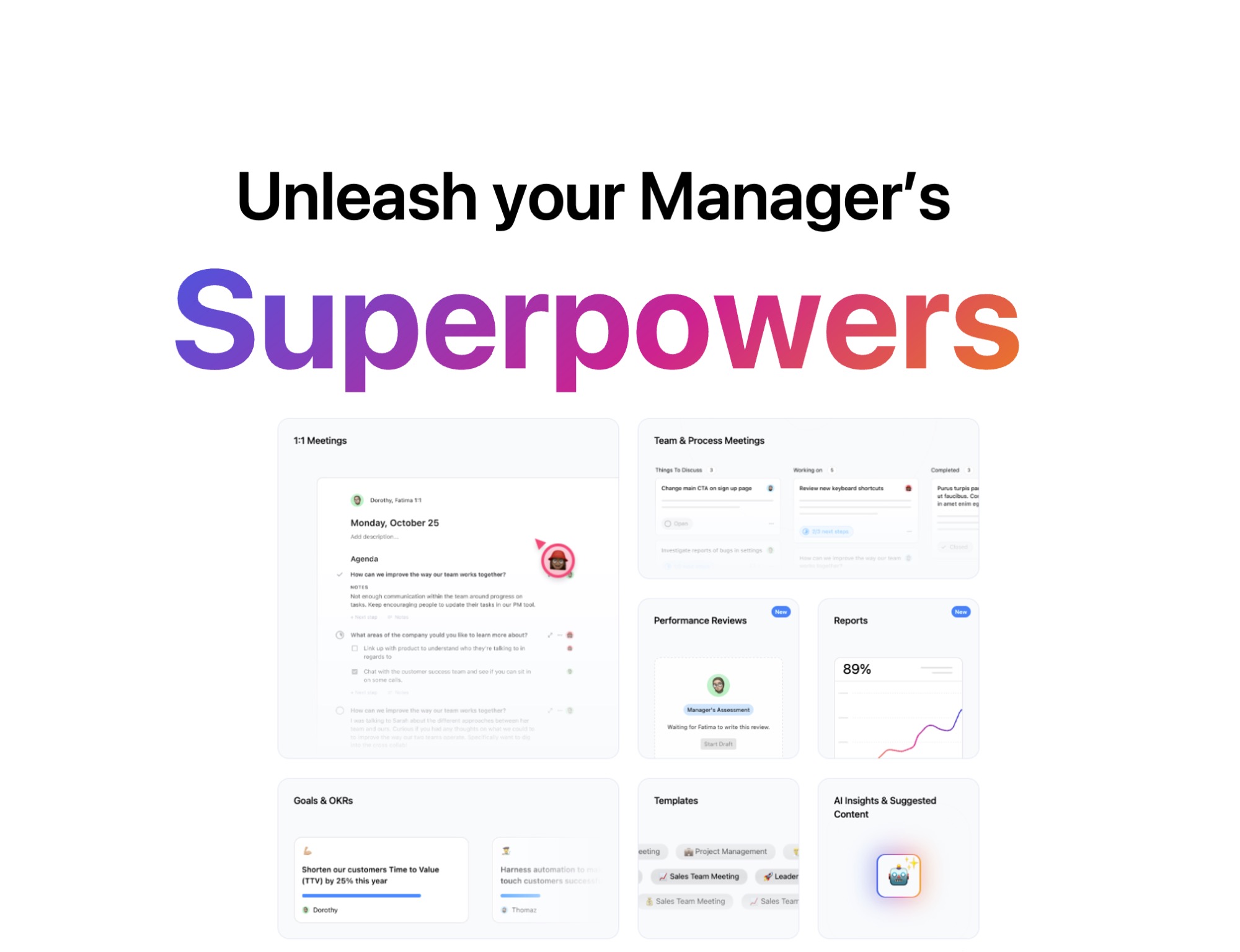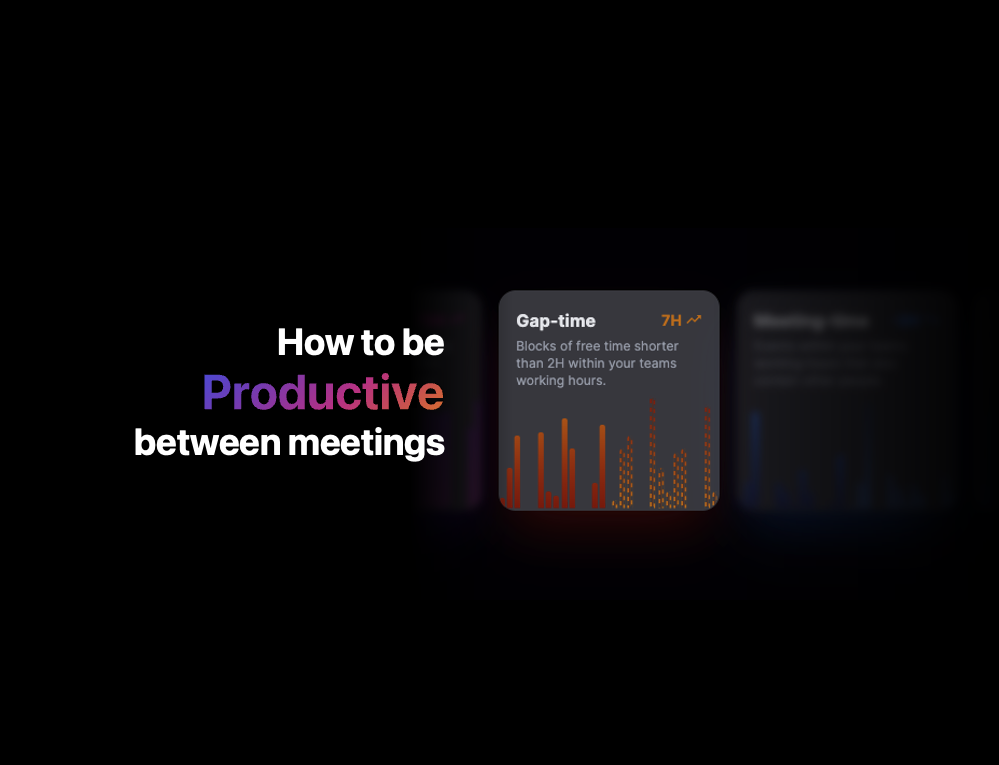The benefits of mentorship programs (and how to start one)
12 min readHow do you make employees feel valued? Learn more about the benefits of mentorship programs and how to implement one at your company.

Making employees feel valued is a crucial part of employee satisfaction. Yet, so often companies rely solely on game nights and social events to show their appreciation. While it’s true that social events at work are a great way to help relieve stress and improve trust and morale— too often they’re equated with a strategy for employee recognition and engagement. If this sounds like your company, it may be time to consider the benefits of a mentorship program.
Developing a mentorship program can help employees feel valued and engaged at work. In fact, according to a CNBC/SurveyMonkey Workplace Happiness Survey, 90% of workers who have a career mentor say they’re happy in their job.
Employees aren’t robots. They have unique motivations, goals, values, and communication styles—which need to be understood and embraced so they feel like valued members of the team.
In this article, we’ll walk through:
- Why it’s important to show employees they’re valued
- How mentorship programs help employees feel valued
- How to start a mentorship program at your company
Why it’s important to show employees they’re valued
If managers neglect the intangible but crucial part of their job — to show appreciation for their employees — they’ll experience:
- Plummeting productivity and engagement
- High turnover rates
- The prevailing feeling that they and other employees aren’t valued at your company
In a Harvard Business Review article on why employees quit their jobs, the reasons weren’t because of their bosses, like many would believe. A study on why people were leaving Facebook, for example, found that it was because of their jobs. In other words, they quit because:
- They weren’t enjoying their work
- Their strengths were underutilized
- They weren’t growing
That being said, managers are responsible for what those jobs look like and helping employees succeed. From taking the time to understand what each employees’ growth and career goals are, to finding opportunities to help get them there, managers have some, if not a lot of power, to shape roles within their team.
Making sure employees’ intrinsic motivations and desires are being addressed is a key part of that. It can be as simple as asking growth and development questions like:
- What’s something you’d like to focus on more next quarter?
- What’s one thing you really wanted to do last quarter but didn’t get a chance to?
- Outside of your role today, what areas would you like to grow more in? (I.e. leadership vs. individual contributor paths)
Managers who want teams that perform at their best and don’t quit should focus on making their employees feel valued by utilizing their strengths and helping them grow.
It increases employee engagement
It’s been widely cited that the majority of employees in the U.S. workforce are disengaged. In fact, there’s one disengaged employee for every two who are engaged.
There’s clearly a disengagement problem. But, what’s the solution?
In a Gallup study into how employers can increase engagement, they found seven strategies that made measurable gains. All of these strategies tie back to the fundamentals of making employees feel valued. Some strategies they noted include:
- Hiring leaders who are, themselves, engaged and curious about their work
- Training managers to be good leaders
- Clear communication on expectations and goals tying the employee’s job to their own intrinsic goals and ambitions
It improves retention
Retention is a significant challenge across all industries. Especially right now, amidst The Great Resignation.
There are a plethora of statistics that show employees will earn less on average if they don’t transition to new companies. It’s also believed that staying in a role for too long may look bad on a resume. So it’s no surprise that 70% of employees are either actively looking or often thinking about new opportunities.
As a result, there’s a lot of pressure for employers to build workplaces where people enjoy going every day (whether virtually, or in-person), while investing in the growth and development of its employees.
Randstad, a Dutch multinational human resource consulting firm, is doing just that. They recognized that to increase retention they needed to show that they valued their employees. So they implemented a global mentoring program. Their mentors need to be certified and go through training to participate in the program.
By implementing their mentoring program they’ve found that employees are 49% less likely to leave Randstad if they received mentorship. Additionally, their study revealed that they saved $3,000 per participant per year by having lower turnover costs like recruiting, retraining, and lost productivity.
When employees feel valued, they’re engaged with their work. They’re also better equipped to handle the pressure of meeting targets or goals in creative ways. They stand out and are better team players, more communicative, and generally a joy to work with. Don’t wait until your offboarding meeting to start thinking about how to retain and engage employees, start now.
In short, valuing employees helps both the company and people flourish.
How mentorship programs help employees feel valued
Feeling valued at work ties back to important things like being recognized, feeling connected to others, seeing the results of your work, and learning new skills that would add value to your resume.
Mentorship is a great and affordable way to meet these needs because it doesn’t require resource-intensive training programs. A mentoring program can be as simple as surveying employees to understand their goals and what kind of professional development they’re looking for, and then matching them with senior employees who can offer that support and guidance.
Here are four ways mentoring relationships make employees feel valued:
1. Empowers employees to set goals that they’re accountable for
Mentorship helps employees set goals and be held accountable to reach them. Mentors shouldn’t be someone’s direct manager as it can lead to a conflict of interest. Instead, pair mentees with senior employees from different parts of the organization.
A mentor ideally becomes someone that their mentee can lean on for support and guidance beyond their direct manager. Mentors can then help their mentees define their goals, work out plans to achieve those goals, and check in on them to make sure they’re on track.
2. Builds a more inclusive culture by increasing the visibility of all employees
No matter the industry, companies that want to promote diversity, equity and inclusion can do so by pairing senior leaders with employees from diverse backgrounds through mentorship programs.
In fact, mentoring plays a huge role in diversity, inclusion and equity in the workplace. A 2016 study in the American Sociological Review found that mentoring had a significant positive impact on the representation of minority groups in management positions.
Increasing the visibility of team members from diverse backgrounds to leadership is key to providing equal opportunities for promotions and special projects. For example, in addition to providing guidance and support, mentors can act as sponsors for their mentees when relevant positions become available.
3. Expands the mentee’s professional network
70-80% of available jobs are not posted on job boards but instead filled through people’s networks. Finding a job isn’t the only reason to have a network. It’s also important for learning and development.
It’s irrefutable that an employee’s network is crucial to their continued growth and development. Mentorship programs make it easier for employees to grow their network in a meaningful way beyond superficial LinkedIn connections, as they provide ongoing learning opportunities.
4. Promotes skill development and knowledge transfer
74% of employees surveyed in a study by Middlesex University for Work-Based Learning felt that they “weren’t achieving their full potential at work due to a lack of development opportunities.” To combat this, companies have begun investing in different learning and development programs. For example, microlearning, a new form of employee training and development, is “projected to be a $2.7 billion industry by 2024.”
But workplace mentoring programs don’t need deep pockets to deliver valuable training to employees. Instead, they harness the knowledge that’s already dispersed throughout your organization and foster opportunities for knowledge transfer.
The knowledge transfer goes both ways. When we think of mentoring relationships we think of a senior leader helping a junior employee, but reverse mentoring is one of many types of mentoring that facilitate knowledge transfer.
How to start a mentorship program
Mentorship programs don’t only provide value to mentees, they’re also beneficial for mentors and the organizations that run the programs. There are numerous benefits to organizations that run mentorship programs, including:
- Train and onboard new employees in a scaleable way
- Pass on knowledge from senior employees to future managers
- Strengthen and promote a diverse and inclusive culture
- Reduce turnover
- Enhance productivity
Now that we understand the value mentorship programs bring to everyone involved, let’s explore how to get started.
Define your goals and KPIs
Starting a mentorship program begins with the goals you want to achieve and how to measure them. If the goal is to show employees they’re valued, the corresponding KPI could be their levels of engagement, retention rate, or productivity.
| Program objective | Program context | KPI |
|---|---|---|
| Improve university admission rates | Not for profit | University admission rate |
| Improve member career progression | Professional association | Promotion rate |
| Improve leadership development | Workplace | Promotion rate |
| Improve diversity at the manager level | Workplace | Promotion rate among employees with diverse backgrounds |
| Improve employee performance | Workplace | % of employees in select performance buckets |
| Improve employee retention | Workplace | Retention rate |
Get leadership on board and promote your program
After you have your goals and KPIs determined you’ll need to begin promoting your program. Promoting your mentorship program from the top down is effective because it shows employees that all levels of the organization are invested in its success. Many employees will decide whether or not they want to join the program based on the opportunity to connect with certain leaders.
Send an email announcement
There are so many ways to drum up excitement for your mentorship program. One approach is to send out an internal email campaign in advance of the launch with details on the program’s structure, what mentors and mentees stand to gain from joining, and other details to get people excited.
Email template example:
Hey team!
We’re kicking off our mentorship program starting on 2024. We want to take advantage of all the valuable knowledge we have across the team and give everyone the opportunity to learn and develop a wide range of skill sets, from marketing strategy to public speaking.
What you can expect from the mentorship program:
– Mentees will be matched with a relevant mentor based on the areas they’ve highlighted they’d like to learn more about
– Mentors and mentees will meet once every month to facilitate this learning
– Both mentors and mentees will have the opportunity to learn and grow from one another
– You’ll have a new opportunity to get to know someone better within our company
If you have any questions about the program, we’ll be doing an Ask Me Anything (AMA) during our company town hall on 2024.
We’re so excited to kick this off and we hope you are too!
– [CEO or program manager name]
Host a kick off event
Another way to promote the program is through a launch event (whether in person or online) where all participants can see one another before being paired. This shows the scale of the program as well as the opportunity to scope out potential mentors which will further generate excitement.
During this time, you should reiterate all of the details you’ve shared in your email announcement and open the floor for questions.
Discuss the mentorship program during 1:1 and team meetings
To help drive more participation in the mentorship program, leaders should make an effort to discuss the program with their direct reports during one-on-ones and team meetings. Smaller groups or one-on-one discussions will provide employees with a less intimidating environment to ask questions they might not otherwise in a company-wide setting.
By bringing it up during these meetings, it’s also a great opportunity to collect feedback on:
- What mentors or mentees are hoping to get out of the mentorship program
- Who, within the company, they’d like to learn more from or coach
- What their expectations are of the program (and what they’re not)
For those involved in the program, you can also check out this quarterly mentorship meeting agenda to help kick off your mentorship conversations.
Create meaningful mentor-mentee relationships
The most important part of a mentorship program is creating great pairings that are relevant to both the mentor and mentee. It can become challenging to manage a mentorship program by examining dozens, or even hundreds of different employees to find a good match. For that reason, it’s valuable to use platforms like Together’s mentorship software and their pairing algorithm to ensure relevant matches are made.
Once pairings are done, you’ll need to introduce mentors and mentees to one another. There are a couple of ways you can go about this:
- Send an email introduction to mentors and mentees to kick off the partnership
- Communicate the match directly to the mentor so they can personally reach out
Monitor the program and measure results
While you should let each mentor/mentee pairing decide what works best for them, it’s helpful to share resources like articles or potential meeting agenda templates that will support the mentoring relationships. This will ensure that the mentoring program doesn’t fizzle out.
You can monitor the success of your mentoring program by collecting feedback from the participants on the relevance of their matches and the outcomes of their mentoring. These qualitative insights are valuable as you continue to grow and evolve the program. For more concrete data, you can also monitor engagement levels of employees and track progress on the reported goals that mentees shared with their mentors.
Conclusion
Employers that want to foster engaged and productive workplaces that show their employees they’re valued need to broaden their ideas beyond just foosball tables and team events.
Mentorship programs are a meaningful and tangible way to improve employee performance and engagement by connecting them with mentors that will support their development. Giving employees resources and professional connections will show them they’re valued in ways much more meaningful than a simple games night each month.



